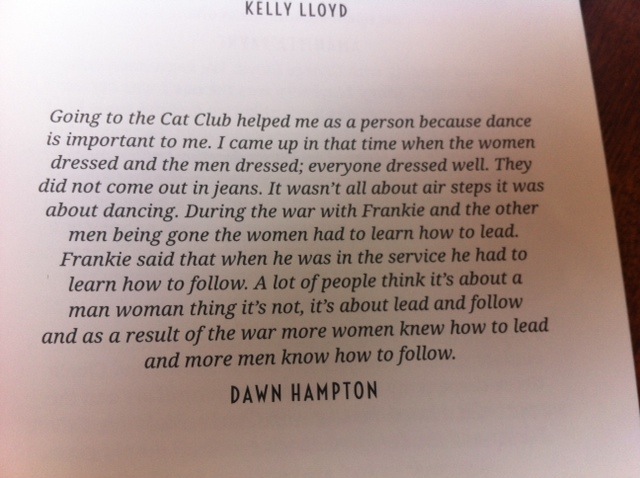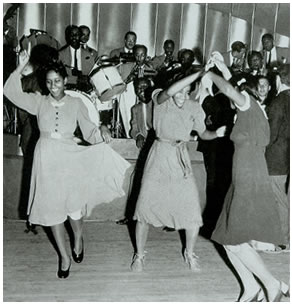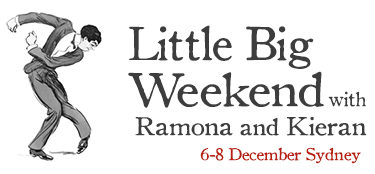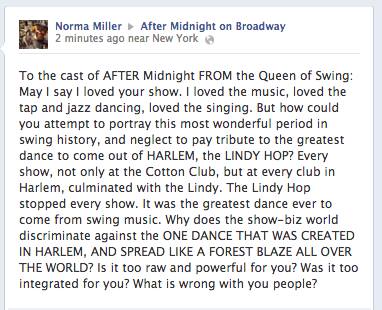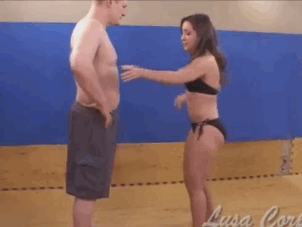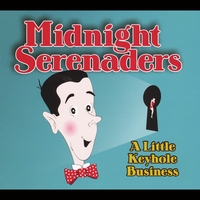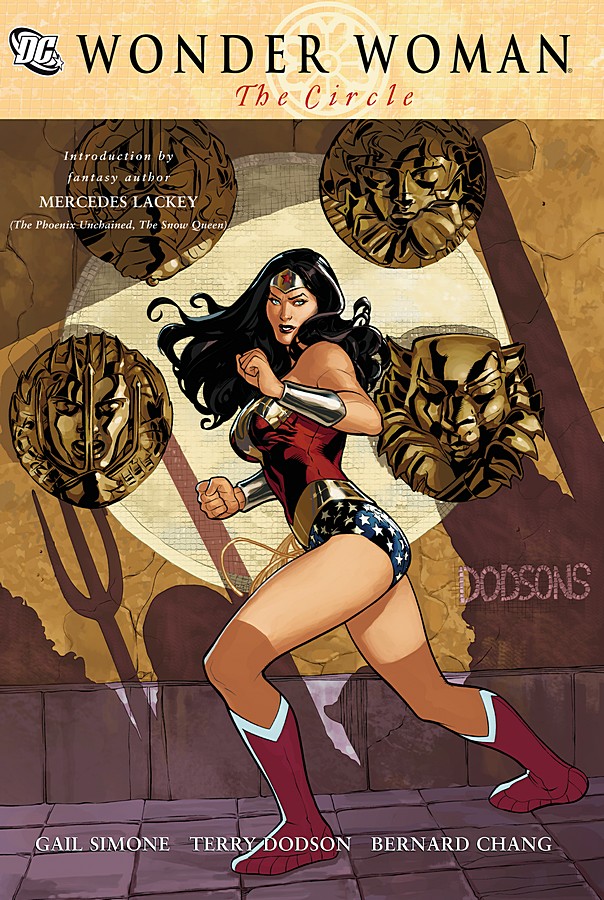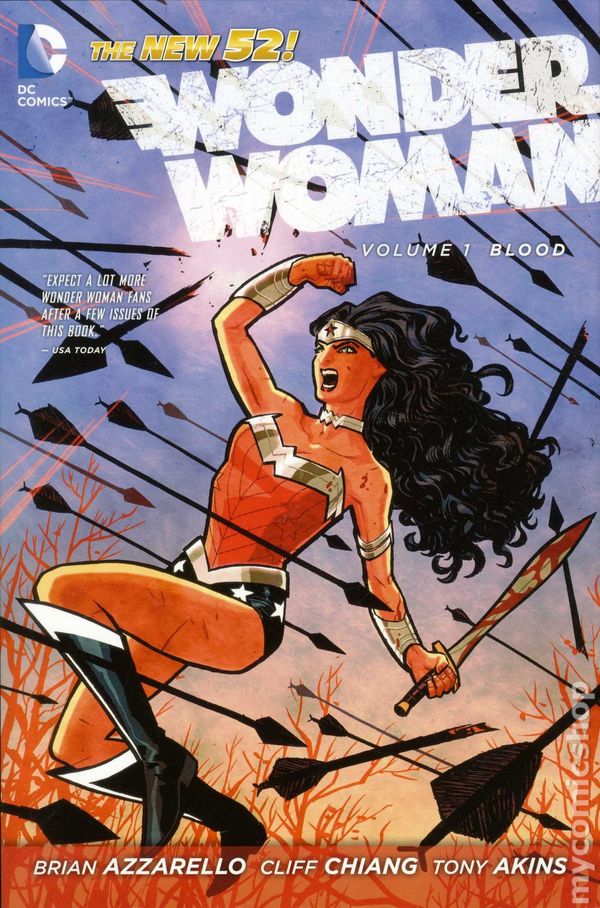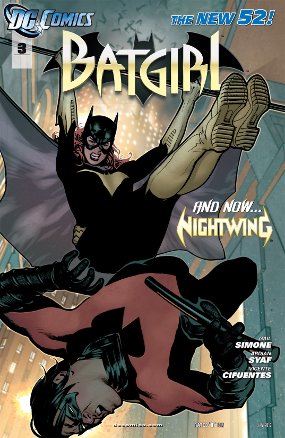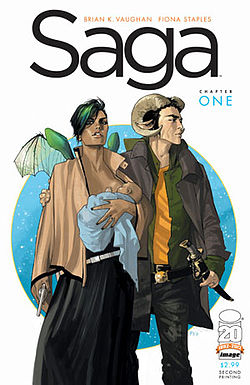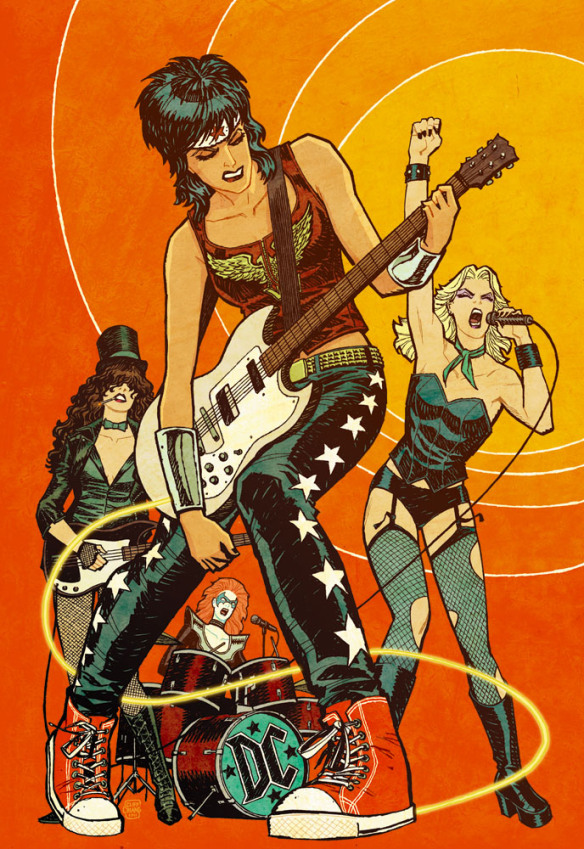Category Archives: same sex dancing
I am not comfortable with the word ‘ambidancetrous’
I need to say this very clearly: I am not aligning myself with the ‘ambidancetrous’ discourse in any way.
I don’t like the implications that everyone should learn to lead and everyone should learn to follow. I think that that’s a dodgyarse approach to lindy hop.
I do feel that we should be able to choose whether we lead or follow or do both (or do neither – something I’m finding with our solo classes, where we get students who don’t lindy hop, but are beginning to come social dancing to solo dance only…. but only in tiny numbers so far).
I don’t think it’s ok to assume that everyone do both. Some of us have very good reasons for only doing one role: for some women, only leading (and only dancing with women) is a very important thing. For some men following is just too confronting. Some women just want to follow, all the time. And only dance with women leads. Some men just want to follow all the time, with male leads. Or female leads. And some of us can do both, but would really rather only do one tonight.
And if we aren’t ok with that, then we are arsehats. Gender is a real thing: it’s very difficult (if not impossible) to partition lindy hop off from the rest of your life (and the rest of your gendered experiences as an embodied person). And sometimes it’s just easier to be a woman who follows or a man who leads. And we have to be ok with that. While we are all capable of – and do – perform gender in a flexible way, who we are, and having particular preferences that are relatively immutable is actually ok.
I think the term ‘ambidancetrous’ is misleading, as it presumes being able to do both is the preferred or optimal state. I don’t actually think being able to do both is the preferred state. I’m actually (and I surprise myself as I write this) pretty much convinced that if you want to take your dancing to the highest level, you specialise in leading or following.
But of course, if you’re a ‘normal’ person, and not working 24/7 to get into the Harlem Hot Shots or whatevs, then doing both is totes fine. And I think the difference really only kicks in at the highest levels of dancing, when you simply don’t have enough hours in the day to devote to both leading and following: practicalities just demand specialisation.
I’m actually ok with doing both roles myself. But I do find that if I want to improve my leading – really improve – I need to spend all my dancing time leading. All my teaching, practicing and social dancing leading. And solo dancing. Because solo is BEST. But I might want to do this – I might just be so interested in and just so much enjoying leading (for example), I don’t particularly want to follow. At all. And my following just naturally might suffer a bit, because I’m not doing it as often. But then, I’m not going to say no when a leading friend asks me to dance. I’m going to follow. And I’m not going to care if I fuck up a bit and don’t do the best following job: dancing! Yay!
And I am very certain that I don’t want to have to go to every lindy hop class and have to lead and follow in each class. Sure, that’s a very interesting idea. But leading and following are DIFFERENT, requiring different skills and methods, and sometimes I just want to work on one of those. Actually, to be honest, I rarely want to do a class or workshop as a follow. I am fascinated by leading. I like following, but I’m just not as interested in doing it, as I am in leading. In classes, anyway. Social dancing is a different thing.
I also have trouble with the suggestion that leading and following in lindy hop are somehow the same. They’re not. Sure, there are similarities in posture, biomechanics, etc etc. But they work in different ways. And when you’re lindy hopping, someone’s gotta lead, and someone’s gotta follow.
Sure, blues might be a different animal and totes open to a less regulated lead/follow dynamic. But lindy hop is different. Leading and following are DIFFERENT. I don’t give a flying fuck whether it’s men or women or WHOEVER leading or following, nor do I care whether I’m dancing with a man or a woman. But I personally think you need to make a choice: in this moment, I am leading. Or I am following.
I feel this partly because the overall structure of a swing song is such that bigger understandings of structure take place over the course of a song, and leading can involve thinking ahead, not just across an 8 or two, but across phrases and the whole of a song. Particularly when the music is faster, and the overall structure of a song is more immediate than it seems in a slower song.
So, in sum, I’m not comfortable with the term ‘ambidancetrous.’ But mostly because I think it’s a clumsy word.
Dawn says so
Same sex dancing
New dancers choosing to lead or follow
Ok, so let’s say you want to encourage more women to lead, and more men to follow. Or at the very least, you want people to feel ok about choosing either role. How do you get brand new dancers feeling as though they can choose?
This is how we do it.
We begin each class by introducing ourselves, and we do it like this:
“Hi, I’m Sam, and I’ll be teaching as the lead tonight.”
“Hi, I’m XX, and I’ll be teaching as the follow tonight.”
That immediately makes it clear that we could be doing either role, and that our choice isn’t necessarily permanent. This is actually a very practical thing for us at our venue, because I occasionally teach as a follow (and I find that very challenging), and we have a range of female and occasionally male teachers drop in, teaching either role.
But if you’re a brand new dancer, these words ‘lead’ and ‘follow’ mean exactly nothing, because you don’t know how this dance works yet.
So we follow up with something like:
“This is a class for new dancers, and we assume you’re brand new, so you are very welcome if this is your first class. Tonight we are working charleston/lindy hop/(whatever it is we’re working on).” And then we demonstrate that. So if we’re working on swing outs, we do some swing outs.
That let’s the students see the partnership in action (though most people can’t really see how leading and following works before their very first class), and it gives them an idea of what they’re in for. It also lets them imagine that this is how they’ll be dancing during the class, which is a nice thing.
Then we do our warm up (all solo stuff).
Then we learn the basic step/rhythm for tonight – charleston, whatever. Again, on our own.
Then we say:
“Ok now you need to decide whether you’re leading or following. If you want to lead, then put your arm in the air.” Or we ask the follows to put their arms up, and then we have them pair up.
This is usually about 10 minutes into the class, so students’ very first experience with lindy hop is that being able to dance on your own is essential. They also learn that leads and follows do the same rhythms and steps. We teach them how to do the rhythm on both feet. So they learn that being able to do both ‘sides’ is really important for everyone. This, incidentally, gives people a chance to get used to being in a dance class on their own first, and it introduces them to learning, and our class culture, on their own. Before they have to do the most confronting part, which is touching someone else. Holding someone else in their arms.
If we’re teaching our level 2 class, we begin with “If you dance both lead and follow, please choose one and dance that for this class.” We don’t care what people do, so long as they stick to one for the entire class. If we have uneven numbers, we try really, really hard not to make dancers feel they need to change their role to suit the numbers. If I know someone is there to lead, and we have massively more leads than follows, I work with that – I don’t try to even the numbers. Uneven numbers is actually a benefit, and I articulate that in class. Our regular students know that if you’re on your own in a rotation, you use that time to work on your own dancing, and most people figure out it’s a real advantage.
I have had trouble when I do substitute teaching at other people’s classes, because the dancers standing out without a partner have to be encouraged more than once to keep dancing. But my feeling is: you’re here to dance. So standing about watching other people is a waste of your time. Unless of course you need a little break, which is ok.
And that’s it. It’s really that simple. If you treat it as normal, so does everyone else. And for us, it is normal. It’s important for us to identify who’s leading and who’s following in the teaching partnership, especially for brand new dancers, because they often can’t identify the role on their own.
We always say ‘lead’ or ‘follow’, and we never use gender specific terms. Because that’s dumb. And gender isn’t actually important. It’s much more important to talk about the role – leading, following – and to use the words ‘lead’ and ‘follow’, because it helps you develop an identity for each role, that isn’t about gender, but is about dancing qualities. So, in my mind, a lead leads – if I want to have a follow step towards me, I need to take a small step back (rather than yanking on our arms). If I want the follow to do a particular footwork rhythm, I need to do it too, and first, and with confidence. If I want my follow to be relaxed in their body, I need to relax my body. And so on. Similarly, following isn’t about ‘doing as you’re told’, it’s about maintaining momentum. I might say “I’m deciding what move we’re doing, but (follow’s name)/the follow is deciding how we do that move, and they’re responsible for maintaining the momentum. We’re both responsible for keeping time (with our bounce), and we’re both responsible for doing good, clear rhythms. We are both (as Ramona says), responsible for taking care of the rhythm.”
I find that avoiding gender specific language actually frees my mind and my teaching to explore the way leading and following actually work. If I can’t say ‘ladies’ and ‘gentlemen’, I have to find other words that describe what we’re doing. And that makes me a much better teacher.
We didn’t begin with this model. When Alice and I started, we would say “Traditionally men led and women followed, but we don’t need to do that,” or something similar. And then, looking back through old photos, I realised that that was just plain wrong. Women have always led, men have always followed, and men have always danced with men, and women have always danced with women. For the same reasons they do today – a shortage of the other gender, a preference for the same sex (whether romantically or just because fronds), wanting to dance with friends, coincidence, dancing skills and preference, etc etc etc. So we stopped saying that, because it’s WRONG. And I think it’s extra wrong to tell a bullshit version of history when we’re dancing a historic dance.
So if you’re working on this stuff – good luck, and do let me know if you have other strategies! I will TOTALLY steal your ideas!
Busy Ham finds time to rant about gender
I’m sorry I’ve not posted much lately, but I’ve been TOO BUSY!
So far this year:
- We ran a Hot Foot Stomp on the 18th January (and demonstrated why there’s so little lindy hop in Australia in January: it’s too FUCKING HOT);
- Our usual Wednesday classes started up again at the beginning of February (and I began working with a new teacher while my usual partner’s been doing a residency elsewhere);
- We launched our weekly solo class at a new venue on Thursday nights in February. Squee! A studio space! With mirrors!;
- We ran a social night at our Wednesday venue with a visiting American band, Underscore Orkestra, and it was GREAT. I thoroughly recommend them – they tailored their set specifically to dancers;
- I’m planning a dance with another visiting musician for my day job;
- I’ve done some booking and preliminary planning for the Winter Performance Ball for my day job, and it’s already proving drama-filled. Performances: they bring out the drama in lindy hoppers. Which is ok, really, because drama is much better than apathy;
- I’m booked to do some teaching up at the University of Sydney for their new swing dance club (!!), which so far hasn’t taken much physical time, but it’s borrowed some of my thinking time;
- We’ve started planning for some workshops we’ll be teaching in New Zealand at the Christchurch Swing Festival at the end of April, which Al and I are especially excited about;
- I had some health challenges in February, which I wouldn’t ordinarily mention, but it was very frustrating to have all my planning interrupted. ARGH;
- And, finally, I’ve started work on a solo dance weekend for here in Sydney in October! We’ve run solo dance workshop weekends here before, but this is a big one, and will host Lennart Westerlund and another international teacher for a weekend of solo dance FUNSIES. I’m planning to use a house band of local musicians, squeeze in a second band for the last night, run a bunch of parties with them, have the teachers do the strangest classes they can, perhaps do a solo dance battle/jam (I like that Al and Leon format they used at Lindy Focus last year, and generally have a jolly good time. I’m interested in more unusual structures for the classes, parties, and comps, but unusual and new means MOAR WORK, so I have to get thinking on all of that. Not to mention finish the goddamm website and promotional material. I’m really very slow off the mark on that this year, but the health stuff really slowed me down. ARGH. Anyway, if you’ll be in Australia 10-14 October this year, you should come. We are a great city to visit, even if you’re not dancing, and if you are, the music is great and the people are friendly.
I’m a bit sad that I haven’t done any Women’s History Month posts this year, as I really enjoy them, but you can check out the 2011 posts or 2012 posts for a taste.
More contentiously, Bobby White posted this status update on faceplant recently, and someone tagged me in the comments:
Casting call: For an upcoming Love & Swing article on Swungover, I’m looking to see if there’s anyone who is open to interviewing who
(1) is a heterosexual male who has chosen to follow as his primary role in dancing.
(2) is a male, leader or follower, who has chosen to dance with “feminine” characteristics to his dancing (for whatever reason, and with whatever definition of “feminine” they choose.)
(3) is a heterosexual female who has chosen to lead for her primary role.
or
(4) is a female who has chosen to dance with “masculine” characteristics (for whatever reason, and with whatever definition of “masculine” they choose.)
Please contact me at robertwhiteiii@gmail.com if you know of anyone who might fill these descriptions, or, if you don’t mind, please like so that people will see it! (28 Feb
I commented:
I have problems with the use of ‘female’ when we’re talking about anything other than meerkats.
I’m a woman who is primarily a lead, and sure, I’ll talk about it. If you can handle the snark. I think we’re friends if you want to pm me. (28 Feb)
Gee, wasn’t that snarky.
Then I added
….incidentally, your definitions of ‘feminine’ and ‘masculine’ are severely limited: there are many masculinities and femininities happening here (I reckon you need to read some Judith Butler), and these aren’t consistent across cultures. (28 Feb)
Bobby replied:
Sam, where did I define “masculinity” and “feminiity” in the above post and statement to make you think I have a limited definition? I have purposefully NOT defined them in order to see other people’s personal insight. Am I missing something? (1 Mar)
…This whole thing kind of pooped me, because it’s such OLD FASHIONED SEXISM. I just couldn’t be bothered. So I set it aside for a few days. I’d intended to just respond with a blog post, but then Bobby PMed me, so I figured it’d be rude not to reply. I was a bit snarky in those comments above, but, frankly, this comes up SO OFTEN and it’s SO EASY to find out why it’s not ok to describe women as ‘females’, for example, I just couldn’t be bothered.
But well, I had a bit of time.
Meanwhile, my twitter feed was full of unrelated conversations where women were making loljokes and laughing about blokes describing women as ‘females’ (again), so I figured it was something I needed to comment on.
Bobby asked in his PMs:
(1) How did I use “female” in a way that you have a problem with it; I felt I used it only in its scientific, factual sense, with no bias or implied meaning other than simply gender. I used “male” as well in the exact same wording. Am I missing something?
This question does make me lol a bit, because it’s such an OLD discussion.
The next question:
And (2) how did I mention gender in terms that made you think I have a limited view, especially when I clearly stated “whatever that definition means personally”to the person answering.
I’m truly curious.
Bobby was asking in the best spirit, and I figured it was worth answering. This is what I wrote:
————-
Hi,
I’m sorry, I’ve been super busy lately, so haven’t had time to write. And I don’t really have time to do any proper talk right now.
but
1. I’d go with Butler’s ‘Gender Trouble’, as it’s most relevant. I used it as a starting place to talk about these issues in my phd. Basically, we’re talking about performing gender.
2. The problem with using ‘females’: we’re not doing science, here, so that’s not really the right approach. More importantly, there’s a difference between women and female: female is gender, women is biological sex. Gender is socially constructed, and sex is biological. In this context, you’re talking about people’s biological sex relates to their performance of gender, right?
Additionally, using ‘females’ in this setting makes us sound like meerkats – it’s not appropriate. There’s a wealth of feminist criticism of this, so I suggest you do a bit of googling on that one.
3. There are multiple ways of performing femininity and masculinity. Or, there are multiple femininities and masculinities, and these aren’t fixed or permanent. They are specific to particular moments in time, to particular cultures, ethnicities and demographics. Patriarchy tends to insist that there’s only one type of femininity and masculinity, and that these are the only desirable models. So femininity equates to delicate, sensual, passive, gentle, nurturing, caring, soft, hairless (except on your head), emotional, untechnological, natural, etc; masculine equates to aggressive, potentially violent, mechanical, intellectual/rational, etc etc. Both are necessarily heterosexual and interdependent.
In that setting, if you aren’t gentle/sensual/caring/etc, you’re not feminine.
Your questions implied that you see only one type of femininity and masculinity at work in the world (and in the lindy hop world specifically). When this is certainly not the case. We just need to compare Frida S and Sharon Davis to see two very different performances of femininity at work.
I personally wouldn’t engage with the discussion you’re presenting because I cannot accept the premise of the question: that there is one ‘femininity’ and one ‘masculinity’, and that women dancers must choose between these two. As a woman, and as a dancer, there’re many more interesting things going on in dance and gender than these two very limited options.
There is quite a lot of literature looking at how race and ethnicity work in these discussions which are particularly relevant for us, as we are dealing with dances which developed in black communities a century ago. This is something I’ve written about lots of times, and which I think is very important. It’s also something I have dealt with in classes with students.
As an example: hetero, middle aged men often find Leon James’ styling ‘effeminate’, and I’ve had them ask me (as I teach as a lead) “How do I style this as a man?” The problem isn’t so much that I’m a woman demonstrating a step, but that the type of masculinity Leon James performs seems ‘effeminate’ or ‘non-masculine’ to a modern day Australian man from this particular demograph. Leon tends to play with gender a bit anyway: he’s definitely not a woman, nor is he performing a femininity. He’s performing a different type of masculinity, which is quite specific to him, and to his moment in time. And there are more complex issues of race, class, and ‘theatre’ going on in his dancing.
4. There are also some problems with the way you’re linking sexual preference/identity with gender in your questions. In implying only two types of gender (masc/fem -> in patriarchal terms), and then asking for straight women who lead, and then looking for ‘female’ and ‘male’ styling, there is the implication that if you are a straight woman, it’s unusual for you to be styling ‘masculine’, and if you are a lesbian, it’s unusual for you to style ‘feminine’. Gender and sexual identity are far more complex than this: dichotomies are hopelessly limited, and there are more ways of being a dyke than just ‘butch and femme’. Lesbians don’t just map their relationships onto hetero/patriarchal models of a male/female dichotomy. In fact, straight women don’t either.
There’s lots more to be said on this. And your first response is probably, “Oh, I am actually just looking for these specific examples; I don’t have space/time to do all that other stuff.” But my response would be “We see these sorts of discussions of heteronormative/conventional gender all the time. By asking the same questions again, and by reproducing the same gender norms again, you are contributing to the maintenance of patriarchy. Why not try something new and interesting instead?”
—————
For me, my dancing has gone a long way beyond ‘dancing male’ and ‘dancing female’. That dichotomy really is far too limited for just me and the way I think about my dancing.
When I started teaching as a lead (two years ago), I did worry about the male students not having a male role model to draw on for styling. But as a clever friend pointed out: “You don’t want students to dance like their teacher anyway, do you? Won’t they be seeking out other dancers to experiment with developing their own style anyway?” So I got over that worry.
Interestingly, I do wear trousers when I’m teaching as a lead, and try to wear a skirt or a dress when I’m (very rarely) teaching as a follow. When I’m teaching solo I just wear whatevs. I wear trousers when I lead because it sets up particular lines, and it helps me ‘get into character’, or remember that I’m leading. When I’m teaching I need to be hyper-aware of what I’m doing with my body, I need to be self-reflexive. When I’m social dancing, I don’t worry about any of that. But I find trousers give me a little mental reminder to help me remember what I’m doing. I also find leading uses a lot more forward-backward movement, while following uses more contra movement, and trousers work better for me for leading than for following.
So, for me, there is a degree of ‘butching up’ but dancing as a lead. But it’s ridiculous to say ‘men wear trousers, women wear skirts’, because HELLO, 21ST CENTURY. This is something for me, not a general comment about what women dancers should wear.
I’m quite fond of wearing waistcoats and things for dancing, but not necessarily because I’m thinking ‘masculine’. I’m thinking ‘dress up in practical fun clothes’. I wear dresses as well as trousers.
Look, basically, for, me (and I cannot speak for all women), gender is much more complex and interesting than ‘masculine’ and ‘feminine’. As a human being, I’m occupying a more complex place than just ‘feminine’. I am a woman, but I explore gender – femininities – in lots of different ways. As an example, in my professional role as an event organiser dealing (almost only) with men, I have to adopt particular mannerisms and approaches to make it clear that I know what I’m doing: confidence, a particular sense of humour, a way of standing, a way of making eye contact and shaking hands. None of these are particularly ‘girly’ or flittery-feminine. But I’m certainly not a man, and I’m not ‘masculine’. I’m just working with a different type of femininity. Which quite a lot of men find threatening, which is ok by me. I want a degree of intimidation when I’m negotiating work stuff with some men.
But this is just a professional persona, and one I use only at work, and only with certain types of men. As any second year women’s studies student knows, gender roles and gendered behaviour aren’t fixed, ‘natural’ or permanent: they are clothes we put on for certain settings and tasks. In the context of patriarchy, being chameleon in gender is about subversion and power for a woman. As a dancer, it’s exciting: being aware of how you change the way you move and hold yourself makes you a better dancer, and a better actor and performer.
I guess my main problem with Bobby’s article was that all this discussion was predicated on reference to a heteronormative romantic love. He’s looking for straight women and men who dance ‘unstraight’ (ie ‘masculine’ or ‘feminine’) to talk about romantic love. As though it’s surprising for a straight woman to adopt ‘masculine’ mannerisms. At the end of the day, I reckon Bobby might need to meet a few more queer folk, or perhaps to spend a bit more time with straight women, to understand just how fluid and interesting gender is, and how sexual preferences don’t necessarily fit cleanly into gender binaries.
Do all the things
Omg I am so busy. SO BUSY.
Next Thursday I fly to Melbourne for MLX, the biggest, oldest, best lindy hop event in Australia. It’s fucking great – if you’re coming to Australia to dance, come for that. Nothing else comes close, and Melbourne is a great city. Weather is shitty, but there are good pubs. The music is THE BEST.
I’ll be head DJ for that, and the increasingly ambitious MLX program has made my job trickier this year. The number of bands: HIGH. I aim to dance until I might chuck. Yeah, that’s me running from the dance floor with my hand over my mouth. Super professional.
I get back on Monday. On the Wednesday our little teaching venue is hosting the charming singer Hetty Kate and the phenomenal guitarist Ian Date for a once-off ‘Swinging at the PBC’ gig. Every time I describe Hetty Kate as charming, or see her being described as ‘lovely’, I lol, because she is the saltiest arsekicker femme ever. We are very lucky to have them do this gig for us: Ian Date is now based in Ireland, and Hetty Kate is based in Melbourne.
That’s the very awful ad I made. I wish I could have a solid designer on my staff to whip up these ads at a moment’s notice, because I need approximately one million items a year to promote things online and face to face.
I think it’s worth pointing out that Hetty Kate has the best online presence I’ve ever seen in a jazz musician. She has a lively, interesting instagram account, which was particularly cool to follow when she was recording with Gordon Webster. She’s fun to follow on twitter, she has a fab website, which has everything a promoter needs: high-res photos, tour dates, downloadable posters, pdfs with bio information. She also keeps an up to date facebook page. And she managed a very effective pozible campaign, where she capitalised on a performing relationship with Gordon Webster to record a crowd-funded album. Working with Gordon is, of course, promotional gold in the lindy hop world – the guy has massive pull. All of this is just so great when you’re promoting her for events. Add to this the fact that she’s a very good ‘product’ – a great singer, an entertaining performer and a very together, organised professional – and she is the perfect musician to hire. If only 90% of jazz bands could figure this stuff out.
I am quite excited about this gig because I’m running it independently. It’s tagged on the end of our classes, which we teach through a big dance school, but this social dancing bit is independent. I just thought ‘fuck it – let’s have a good party.’ I don’t care if no one turns up: it will be a brilliant fun time, and I figure: here’s a present for our group. I run a lot of events during the year, but this is the first one I’ve run completely independently. Well, there are still a lot of people involved, working the door, teaching with me, helping put the band together (there’re more musicians than just Hetty Kate and Ian), etc etc etc. But this is the first time I’ve gotten up the guts to do it all on my own. WINNAH.
On the Thursday after that, the teachers for the Little Big Weekend arrive, and the classes begin.
The Little Big Weekend kicks off officially on Friday night. I’m running this one, too, but I run it for the dance school, which means they fund it, but I plan and manage it, and work with a few superawesome people to run it on the weekend. It’s not possible to run a good event entirely on your own, and furthermore, it’s not a good idea: get other people involved to save your sanity, but also to give other people a chance to get involved in event management. The more people with more skills in your local scene there are, the higher the quality of the events, the greater the range of event types and styles. Diversity is good for lindy hop.
This is the fourth Little Big Weekend (they’re biannual), and it’s the most ambitious. Leigh Barker’s band the New Sheiks is coming up to play the Friday and Saturday night gigs, and they’re part of the Melbourne Rhythm Project. The MRP is a collaboration between dancers and musicians – lindy hoppers, tap dancers, guitarists, pianists, trumpeters, fiddle players….
They will be performing at the Saturday dance, but the dancers are all coming up mostly to hang out and be a part of it all. There are only three main workshops on the Saturday, but the third one will involve the musicians playing in-class, as we look at musical and dance structure and history.
This is exactly the sort of thing I LOVE, so that’s very exciting. And it’s very very nice to finally get to work with Leigh on a project after such a long time emailing and talking online, and chatting in person. Even if the entire weekend collapses (which it won’t – we’ve sold out of workshop passes already), we are still WINNAHS because we are trying something very interesting, and right in our own creative and professional ballparks. And it will be MAD FUN.
But that’s not all there is to the Little Big Weekend. The Speakeasy kids are flying in another Melbourne act: Andy Swann’s band. He’s been involved in lindy hop almost as long as I have, and he has mad skills. That party is already fully sick (at the last one I nearly did chuck up because I was dancing too much), so I’m not sure I’m physically capable of handling it. That party is one of the main reasons we don’t have Sunday workshops: it is not physically possible after the Speakeasy. The Speakeasy is the sort of late night party where people can dance seriously hardcore lindy hop, and then find that they’re just dancing all over the place. Not ‘solo dance’, but just rocking out. And the band usually bring their girlfriends (yes, the bands are all straight men. I’m working on that, though) and friends and they get up and just rock out, and it is awesome. There’s really good food, a blues room, a nice cool, quiet room to chill out in (I rarely avail myself of that – I like to keep on rocking). When the band ends at 4am you think ‘wtf? we just got started!’
Anyway, the week after that we don’t have any classes to teach because our venue has finished for the year, but I’m off to Melbourne again for Sweet n Hot to do some classes with ‘Skye and Frida’. Seriously doods, why doesn’t anyone ever list the follow’s name first? I mean, Skye is great and everything, but Frida is freaking powerhouse. She has unmatched dancing experience, talent and knowledge. I have booked a nice, quiet single room studio space on airbnb, so I’m going to chill. Hopefully there won’t be any chucking up on this trip.
Then it’s back to Sydney for a nice, quiet christmas. Until January comes, and new plans are set in place, and shit gets even realer.
I like what I do for a job, but sometimes I worry that dancing isn’t really important enough to spend this much time thinking about. But then I remember that running a business and being an event organiser and teacher and all that is actually a lot of work, requiring skills that are useful in all sorts of businesses. And dancing brings people joy, and sends joy out into the world. I could be working in fucking retail again, for fuck’s sake. But dance is about empowering people, and I think it’s important. THE END.
To sum up, here is Norma Miller being fabulous again:
Someone replied to my posting this by pointing out that the show itself didn’t seem so bad. That was interesting, but when I read Norma’s comment, it didn’t occur to me that I should engage with her criticism of the show. Who knows what that show’s like. I was reposting her criticism because Norma Miller is exciting. She makes me feel strong and reminds me that you need to be confident and loud and powerful.
My response was:
The thing I like about this is that Norma Miller is a confident black woman who calls herself ‘Queen of Swing’ calling out some dood who made a stage show, on public media. She just doesn’t give a fuck – she has a point to make.
Every time she calls someone out or declares, with confidence, that she is THE BEST, I get excited, because women aren’t allowed to do that in lindy hop. I bet no one sends her hate mail. Or if they do, she finds them at a party, stands really close to them and gives them the biggest telling off OF THEIR LIVES.
She’s fearless. FEARLESS. And for an older black woman living in America – that shit is AMAZING. …fuck, for a woman living anywhere these days, that shit is SO INSPIRING.
So I don’t even care one bit about that show or what it’s about. This is a story about how awesome Norma Miller is.
I love her comment, because she’s obviously doing a bit of self promotion (queen of swing), she’s calling bullshit, she’s shamelessly stroppy. And that’s what’s so exciting. Women aren’t supposed to be these things. We’re supposed to be shy and meek and modest. And Norma is not.
So, I’m going to end this post with this nice little quote which I found on I hope you like feminist rants:
I think that a lot of women would like to do more organisationally things in lindy hop. We’re not all designed to be the famousinternationallindyhopcelebrity. There’s so much body image shit going on there, so much gender crap about working with male partners. But if you are ambitious, and you do have ideas, and you want to just do more than dance in lindy hop, there are lots of options. Start small, and work up. You don’t have to run events or DJ or do stuff like that. There are other cool things.
You could start a once-off performance group with two friends. I’ve done this many times, and it’s great. You mightn’t do the best performance ever, but the process will teach you SO MUCH. You could work the door at a dance. Sure, it’s not glamorous, but the people who work the door, bump in and bump out of dance events are the ones who make the whole thing possible. It’s like the office lady at uni: she is the most important person in the department. And seeing how an event works in front-of-house teaches you how important it is to have a friendly face greeting first time dancers: lindy hop scenes are built on welcoming dance spaces. You could design and make dance costumes. You could design decorations for dances. You could learn to work sound gear (please, please do this and come and work for me – I NEED you! I will CHERISH you!) There are so many interesting options!
For example, Sydney Lindy Hub is run by a woman. This cool guide is the most thorough, most comprehensive guide to swing dancing in Sydney. There are quite a few guides to jazz music for dancers around. I ran one myself years ago in Melbourne. But this one does it right. What’s so great about it? Firstly, the listings are comprehensive. You’ll find all the band gigs, all the DJed gigs, all the dancer-run gigs, all the council run gigs, all the musician run gigs, all the live music venue gigs there. This thoroughness is the result of good research skills and – even more importantly – good networking. People contribute gigs to SLH, they contribute reviews of gigs, and they are engaged with the site. This is a total WIN.
This engagement is a product of the guide’s cross-platformness (a website + FB + twitter), but also of the administrator’s style. She responds to people positively and with enthusiasm, and she’s proactive in her support of events. I never get a chance to send her my event’s details, because she’s already on it. I never get to suggest live music gigs, because she’s already there. As an organiser, I see SLH as an essential promotional tool, so it’s in my interests to engage with it (and with the administrator), but it’s also a pleasure to engage with it, as it’s so useful and productive.
I like the positive, inclusive tone of the listings. I LOVE that SLH encourages people to go out and review gigs. It’s easy to just list a heap of gigs, but it’s the dancers’ reviews that make this site so powerful. The up to date listings help make SLH a really useful social calendar as well. People organise their nights of dancing around SLH FB posts and listings.
And finally, SLH is perfectly positioned in this moment in Sydney. There was a bit of a decline in organised dance events a few years ago, and SLH slipped in just as local dancers were getting really desperate for social dancing. I think that Sydney dancers’ current passion for live music (and fierce enthusiasm for seeking out new gigs) is largely due to the role SLH plays in the swing dance community. It brings people together, it’s a useful information tool, and the tone is light, fresh and enthusiastic. WINNAH!
I don’t think the administrator’s gender is particularly important in the general scheme of things, but if we are talking gender, and we are talking about how seeing other women inspires women, then I do think it’s important. For me, it’s important to know that I’m part of a network of creative, ambitious, enthusiastic women in lindy hop. It really helps to know that I can ring up a woman organiser in Melbourne to talk about how to manage employing international teachers. It’s exciting to get a call from a woman oragniser in another city who wants to do a collaborative project. And it’s just so NICE to get together with other women organisers at exchanges to just talk shit and then DANCE like fools.
And then, it’s even more thrilling to see women doing things like organising the Melbourne Rhythm Project (Ramona is a driving force there, though I think it’s a pretty collaborative project generally). It’s really creatively stimulating to get together with other DJs (male or female, though increasingly female – we have so many great women DJs pushing up to the top tier in Australia), and I am particularly fond of a woman blues DJ in Melbourne, Manon von Pagee, who has such fascinating observations about DJing for blues dancers. Which I just don’t understand. And, finally, it’s wonderful to be on a dance floor where I know there are heaps of other women leads, so that I’m just one of them. I’m with my peeps.
Men are important and great too, but when there’s so much bullshit in your everyday life, telling you over and over again that you should shut up and be invisible (so you don’t get harassed on the street, sent nasty emails, challenged in dance classes, critiqued on the dance floor), having a couple of powerful women figures out there doing shit is so important. Norma Miller, you are loud and stroppy, and I mightn’t always agree with your opinions, but by fuck: you make me feel powerful.
so not done. NOT DONE.
What? I have to talk about rape and sexual violence and a continuum of disempowerment in dance AGAIN?!
It seems, so. Because some fuckers apparently didn’t get the goddamm memo.
Boys are told from a young age that whatever they do will be excused under the “boys will be boys” mantra, and that “boys will be boys” mentality leads to what I call the “BOILING FROG” problem of women’s sexual boundaries. I call it that because if you put a frog into a pot of boiling water, it will jump right out, but if you put a frog into a pot of room-temperature water and slowly heat it to a boil, the frog will acclimate as it heats and never jump out, eventually boiling to death. Similarly, when we learn as young girls to tolerate “low-level” boundary violations like the ones we often are forced to suffer in silence at school, at home and on the street – bra-snapping, boob-grabbing, ass pinching, catcalling, dick flashing “all in good fun” relentless violations that adults and authorities routinely ignore – it makes it harder for us to notice when even greater boundaries are being violated, eventually leading to the reality that many women who are raped just freeze and fall silent, because that’s what they’ve been taught to do over and over since day one. You tell me what’s more infantilizing: repeatedly letting boys (and grown men) off the hook for their behavior because “boys will be boys” and we can’t ever expect any differently, or creating a consent standard in which all partners take active responsibility for their partner’s safety, and which acknowledges the truly diseased sexual culture we’re soaking in every day.
— The (nonexistent) terrible, horrible, no good, very bad consequences of enthusiastic consent – Jaclyn Friedman
(via let my enemies take care)
Ken Lay, chief commissioner of police in victoria, made the point that sexual violence is a men’s issue
[This is pretty much what I wrote in the post A difficult conversation about sexual violence in swing dance communities. And this is why I argue that gender neutral language is important – not because it is an end in itself, but because the language we use to discuss an issue communicates not only the way we think about that issue, but the way we think we should think and act upon an issue.]
This what should we call lindy hop entry introduced me to the term ‘dudebro lead’ and I LOLed.
And then I got angry again, that we have to HAVE this term at all.
Someone hooked up The day I taught how not to rape which reminded me that it’s worth raising these issues again and again and again, because humans do, generally, want to do the right thing. Even if they are fuckwits.
Why the fuck do I have to keep banging on about this stuff? I feel like a broken record.
But you know why I keep going on about this fucking irritating shit?
Because on Monday I was yelled by three different men in three different cars as I tried to cross a road.
On Tuesday a sound guy mansplained how to turn the volume down on a mixing desk as I was DJing, after I noted it was the same model I’d learnt to DJ on EIGHT YEARS AGO.
On Wednesday a middle aged male student arrived at our class venue, and even after my female teaching partner and I introduced ourselves as the teachers for the venue, he continued to speak to the only man at the table, and then spent the next two hours interrupting us in class, telling our female students how to dance and generally badmouthing and disrespecting them, ignoring our instructions, and finally getting angry and trying to bully us into letting him do the level 2 class next week after I’d just told him he wasn’t ready and eventually said “I’m not talking about this now. It’s your decision, but you cannot do this level 2 class again.” He had done perhaps four lindy hop classes in his life ever.
Thursday I was yelled at by two different men in two different cars as I crossed (a different) road, and then some 20-something cockwit oggled my tits before looking into my face and realising I was telling him to fuck off.
Yesterday a venue manager openly mocked my understanding of live music politics, and mansplained how promotions work. He then proceeded to explain to me who Stephen Cummings and Reg Mombassa are. I chose not to tell him I’d been at a party with Reg Mombassa on the weekend.
The other week I was told (once again) that women leading isn’t ‘normal’ and that a woman can’t really lead the way a man can, and that this robs male students of a proper learning experience. I was also told I couldn’t do public promotional gigs because it gave the ‘wrong impression’.
This is WHY I am still fucking angry about this shit. EVERY DAY something fucking irritating happens to me BECAUSE I am a woman and not a man. It just makes me SO ANGRY. SO ANGRY!
But the part that really makes me angry, that makes me so determined to keep raising these issues and NOT ignoring them, is that I am a perfectly competent, capable woman, but these constant niggling bits of shit just wear me down and make me question my abilities.
And, finally, this is why I don’t just accept that this is ‘how men are’ or ‘how things are’:
Because on Tuesday night a whole big band full of young men politely introduced themselves to me or said hi if we knew each other, and then had conversations with me and my female teaching partner just as if we were ALL HUMAN BEINGS, and more excitingly, as though we were ALL COMPETENT PROFESSIONALS. And if they wanted to flirt (with the women in the room – not me so much :D), they just flirted and it was SUPER NICE because it’s possible to communicate sexual interest in a respectful way.
Today a musician answered some of my questions about the live music industry with respect and common sense, as though it was PERFECTLY NORMAL to have questions and to share ideas with a woman in a respectful, professional way.
On Wednesday when I just decided that that was IT and I had had ENOUGH and told that unpleasant man a) he couldn’t do as he liked, and then b) that the conversation was OVER and I wasn’t interested in his opinion, no one died, I wasn’t beaten up, my (male) partner didn’t feel the need to step in and ‘save’ me, and the whole thing was just RESOLVED.
On the last few times I’ve been social dancing women have asked me to dance and the fact that I’m a woman was just NOT AN ISSUE. And this is really just NORMAL for me, as a woman who leads – it happens all the time, and it’s actually so ordinary no one even notices!
The male dancers I worked with on Thursday night were totally ok, and in fact, probably didn’t even register the fact that our training session was coordinated by women. They were just HAPPY to be a part of a friendly supportive group, getting shit done.
And I read this nice piece by a man, about bodies.
If every man I dealt with was a complete fuckwit, I would give up on all this shit. But they’re not. They’re NOT!
Plenty of men are capable of treating the people around them – whether men, women or children – with respect. And THIS Is why I have NO PATIENCE with fuckwits who’ve decided that being a woman makes me – and you! – less capable, more vulnerable, less important and generally an object to be disrespected.
We are so not done with this conversation yet. SO NOT DONE.
all of the things
It’s 14*C here, but it feels 7, which is VERY COLD for Sydney. I hate the cold, which is why I didn’t like living in Melbourne, where the lindy hop is better, but the weather is not.
Sydney is beautiful. It is that city you see in the tourism ads – beautiful beaches a short city bus trip from the CBD. It has all the culture stuff Melbourne does, only people in the galleries and bars and music venues are wearing thongs or tshirts and their scarves are affectations not necessity.
I really don’t have much to write about right now. I’m a bit busy – got a few events to run (three at last count), classes tonight to prepare for, practice tomorrow to think about. But I do have a new CD or two. I saw lovely Leigh at Unity Hall on the weekend and he gave me his band‘s new CD ‘Australiana’. It’s not danceable music at all, which is really quite nice.
My copy of the Midnight Serenaders‘s new CD ‘A Little Keyhole Business’ arrived, and it’s not so great, which is disappointing. I reckon their second album is the best. But they’re a fun band, and I bet they’re superfun live, so it’s nice to support them.
I’m waiting on a CD or two from a Very Famuss Musician to arrive. Their publicist asked if I wanted one, and I assume she wanted me to review it or talk it up or whatevs. I’ll write a review when it gets here, and we’ll see what it’s like. I have to say: there’s nothing more exciting than a Very Famuss Musician you admire asking if they can send you a copy of their CD. Even if it is their publicist asking.
[Meanwhile, I’m listening to the New Sheiks’ new CD ‘Australiana’ right now, and it’s so very good. I had thought about writing a post about the way I/we listen to music across genres, and how musicians play across genres, and how that’s important, but I don’t have the brain for it right now.]
The little red counter on my email icon keeps ticking over. People are responding to the storm of emails I sent out yesterday. I’d finally gotten it together after a couple of weeks of dodgy health, and did some admin work. Working those contacts. The biggest part of my workload is maintaining contacts. With musicians, with venues, with other event organisers, with sound engineers, with visiting (or possibly-visiting) dance teachers, with local dancers, with artists and designers… there’s really a lot of leg (and mouth) work to be done. Lots of people to talk to and telephone and email. And nothing’s harder when you’re feeling a bit rough than getting it together to have a sensible conversation with someone you don’t really know.
I’ve stopped reading a lot of the blog posts and bits and pieces discussing gender in the lindy hop world. Mostly because most of them aren’t terribly good. I don’t think everyone should learn to lead and follow. But I do think every lindy hopper should be able to solo dance competently and confidently. You can draw your own euphemism if you please. I don’t see the point in arguing for women leads. If you can’t accept the fact that women are as competent leads as men, then you probably don’t know much about lindy hop. Or men and women. And you aren’t worth my time. Women should just lead if they want to. The end. I reckon it’s more important for the male leads to realise just how much better most of the women leads around them are, and lift their game. More importantly, particularly in scenes with fewer leads than follows, the male leads need to get up off their arses and lift their game: the women dancers around them are so much better than they are, they’re turning to solo dance out of desperation. Desperate for a challenge. In sum, the best way to maintain the heteronormativity of lindy hop is for men to be really fucking good leads. Right?
No, I’m not convinced either.
I haven’t done a heap of DJing lately. The Roxbury, one of Sydney’s only proper dancer-run lindy hop events has folded forever. Sad times. That was my favourite DJing venue. There’s still Swing Pit, but I quite liked having an event I could go to and have no responsibilities – just turn up late if I wanted, dance as much as I wanted, leave when I wanted. And if there was a problem with the sound, I didn’t have to fix it.
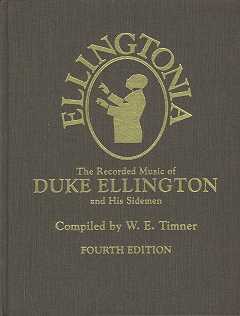
I did buy a copy of Ellingtonia, the Duke Ellington discography. It’s great, but the format of each entry is kind of annoying – instead of listing each musician by name, their initials are used. This sucks, because it means you have to flick back to the guide to figure out who’s who. Makes sorting your music collection really tedious. But then, I think it was hand-typed. It’s certainly self-published. So typing out every name would’ve been a bum.
Duke Ellington, aye. Just when I think I’ve gotten over him, I hear something new, and he draws me back in. I’m really enjoying him in 1941 atm. Again. My current favourite songs is ‘Goin’ out the Back way’ from ’41, which I heard a DJ playing in a smallish dance comp somewhere in the states or Canada. It’s the perfect lindy hopping song. Which of course is the perfect solo dancing song.
Solo dancing has really changed my perception of tempo and speed. Nothing’s too fast when you’re dancing on your own. Which I guess relates to the challenges of following: when you follow, you can’t really change the ‘speed’ or ‘tempo’ at which you and your partner are dancing. The lead gets to decide how many steps you both take. Whether you swing out like crazy people or just step gently through some nice rhythms. When you dance on your own, you get to decide everything. But this has also informed my leading lately. And I’m simply not a terribly talented follow. I would quite like to be a brilliant follow, but it just doesn’t gel for me. How even does following work?
Perhaps my biggest problem while following is that that I just forget I’m not leading, and I introduce steps or rhythms which are ignoring what the lead is doing. And that’s not cool, whether you’re leading or following. So, you know. Leading. That’s where my brain is at. I actually think that you have to decide whether you’re a lead or a follow, if you really want to level up your dancing.
Sure, you can do both and that’s cool. But if you want to get really good at one, you have to dance that one exclusively for a while at least. Because there’s a significant part of your dancing which isn’t conscious decision making. It’s an unconscious response to what’s going on. When I’m leading, I’m responding to what the follow is doing (where their weight is, the tension in their body, the shapes they’re making, the rhythm or timing they’ve got going on), and I respond by initiating something that develops their theme. When I’m following, respond by responding. Sure, I can bring my shit, but someone has to lead, and someone has to follow. They’re different roles, and particularly when you’re dancing at higher tempos, you gotta have a clear idea of who’s doing what. This opinion could really just be an expression of aesthetic preferences: I like to see a clear lead and follow in a partnership, not a muddied, blurry mutual exchange. Not because of politics, but because of physics and biomechanics. And rhythm.
Lennart Westerlund says this thing: “yes, you have the steps, but you do not have the rhythm. I cannot see the rhythm.” He said this about a million times while he was here, and eventually someone in a small teachers’ session asked him “Can you demonstrate the difference? I don’t understand what you mean by ‘see the rhythm’.” So he danced a phrase or two where the rhythm wasn’t clear. Then he danced a couple of phrases where it was very clear. It was quite stunning: I felt all my muscles jump and leap in a real, physical Pavlov’s lindy hopper effect.
So when I watch someone dancing, I don’t want to see a sort of vague blurring of steps. I want to see the rhythms, the shapes, the transfers of weight. I don’t just want to see which foot a dancers weight is on, I want to be able to see which part of the dancer’s foot is on the ground, and whether or not their weight is committed to that particular part of the foot. I want to see muscles recruited efficiently, and turned off when they’re not needed. I really want to see a nice, swinging timing. And I want to feel that leap and jump in my own muscles as I watch. So, I guess I want to see someone lead, and someone follow. I don’t care if you’re taking turns in each role during the dance, but you can’t both drive. Someone has to lead, someone has to follow. Doesn’t mean the follow isn’t also contributing (and I’ve gone into how in detail before). Means that you’re doing lindy hop, which prefers requires participation from each dancer.
Lennart says that too: “someone is leading and someone is following.” I don’t think he cared who was doing what (if he did, he was tactfully discrete with his opinions :D ), he just wanted to see a lead and a follow. But Lennart also made another lovely point: “I don’t want to be speaking all the time. That is boring. I want to hear what my partner has to say.” All of that is of course wrapped up in his phrase, “We must make friends with the music.” What a lovely thought: that we come together, as partners, through friendship with art and the creative work of other people.
HIPPIES!
To be honest, I’m still working through the concepts Lennart Westerlund introduced me to in May. Was it only two months ago? But Lennart’s relaxed, gentle approach to rhythm and timing has changed my brain. He could be dancing very simple, gentle, relaxed figures, but stuff them full of highly complex rhythms and timing. It’s a fabulous idea, and it’s something I’ve been thinking about for a couple of years, and which guides the content of our classes. I’m sure the more ‘intermediate’ dancers find it terribly boring and naff – they just want ‘new moves!’ when I’m thinking ‘moves shmooves – give me an outline and I’ll fill it in with far more interesting stuff.’
I’ve noticed that the very best lindy hoppers in the world (the Swedes, and Skye) tend to use a lot of quite simple figures, but their timing is supremely complex. And that complexity is dictated by the music. People like Ellington. ‘Rockin in Rhythm’, your phrasing is so difficult. Yes, they do use complex moves as well, but the fundamental assumption of good lindy hop is that a simple shape (a swing out, a tuck turn, a circle) is also something highly sophisticated if you make it so.
The thing I like about this relationship between simple and complex, is that these guys looks so relaxed when they dance. Everything they do looks easy. Until you try to reproduce it. There are quite a few dancers around at the moment who are quite fabulous, but their dancing looks so overwrought. They look like they’re Working. So. Hard. I want it to look so easy; I think ‘oh, I can do that’ and then I try, and realise that it’s not humanly possible. And of course, the relationship between ‘simple’ and ‘complex’ is a little like the relationship between ‘hot’ and ‘cool’. I’ve written about that a lot, so I won’t go into it again. Except to say, that the most important part of lindy hop is being relaxed in your body, until you need to turn a muscle or muscle group on, then that part of you is on.
I think that this is part of what makes the ‘swing’ happen. Don’t rush. We’re not rushing. We’re cool. We’re not hurrying. It’s uncool to hurry.
I didn’t mean this post to become a big spiel about dancing. I’m doing a LOT of reading at the moment. Stacks and stacks. I’m on GoodReads as dogpossum if you want to talk books. One of the things I am reading more of at the moment is comics. I’ve always been a bit of a low-level fan, but I’m frustrated by how quickly they read. I need more bang for my buck – at least more than an hour from a book.
I’ve been reading Wonder Woman lately, particularly the Gail Simone series starting with The Circle. LOVE.
I quite like the New 52 Wonder Woman
And I REALLY like the New 52 Batwoman. The art is just gorgeous.
I wasn’t struck on the New 52 Batgirl (boring).
But of course, the new Ms/Captain Marvel is THE BEST EVER.
And I am totally on this bandwagon:
I’ve also been reading Saga, which I quite like, but I’m just not a Vaughan fangirl.
I’m a fan of trade paperbacks because individual comics just don’t last long enough. And, to be honest, I find the writing in a lot of comics that I’m reading jus doesn’t come close to the good SF that I read. And I read a lot of SFic and SFant.
But Wonder Woman. She’s the best. Especially when she’s drawn by Cliff Chiang.
Writing this post, I realise I’ve heaps more books and music and television too talk about! But I have things to do.
…so if you want to talk about Hemlock Grove or Teen Wolf or The Fosters or The Returned or Top of the Lake, assume I’m interested!
Men dancing together
Lauren* hooked me up with this amazing clip
Yes, the first recorded film with sound featured two men dancing together.
*I only have Lauren’s email address to identify her, sorry – no linky.

